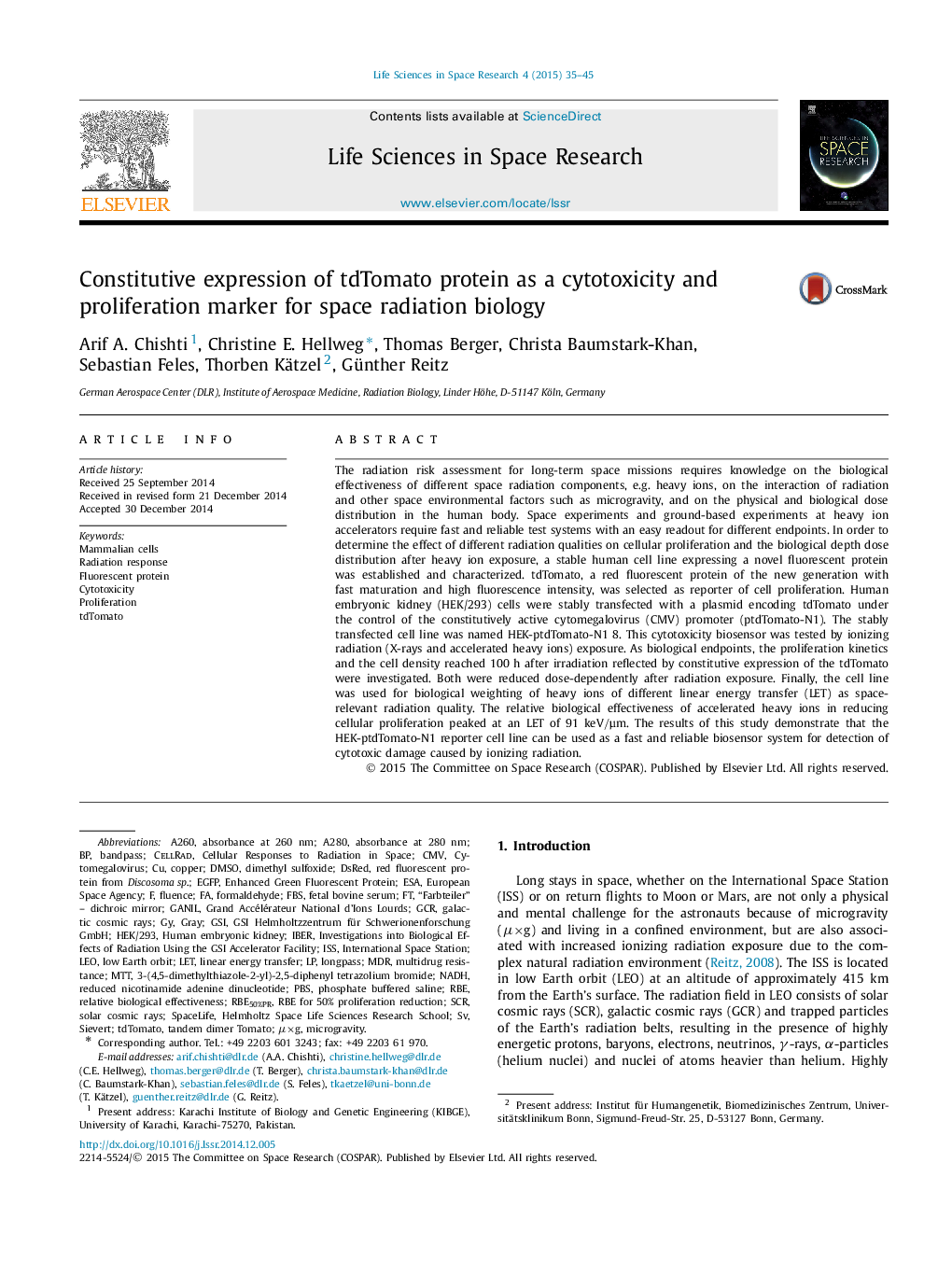| Article ID | Journal | Published Year | Pages | File Type |
|---|---|---|---|---|
| 8248107 | Life Sciences in Space Research | 2015 | 11 Pages |
Abstract
The radiation risk assessment for long-term space missions requires knowledge on the biological effectiveness of different space radiation components, e.g. heavy ions, on the interaction of radiation and other space environmental factors such as microgravity, and on the physical and biological dose distribution in the human body. Space experiments and ground-based experiments at heavy ion accelerators require fast and reliable test systems with an easy readout for different endpoints. In order to determine the effect of different radiation qualities on cellular proliferation and the biological depth dose distribution after heavy ion exposure, a stable human cell line expressing a novel fluorescent protein was established and characterized. tdTomato, a red fluorescent protein of the new generation with fast maturation and high fluorescence intensity, was selected as reporter of cell proliferation. Human embryonic kidney (HEK/293) cells were stably transfected with a plasmid encoding tdTomato under the control of the constitutively active cytomegalovirus (CMV) promoter (ptdTomato-N1). The stably transfected cell line was named HEK-ptdTomato-N1 8. This cytotoxicity biosensor was tested by ionizing radiation (X-rays and accelerated heavy ions) exposure. As biological endpoints, the proliferation kinetics and the cell density reached 100 h after irradiation reflected by constitutive expression of the tdTomato were investigated. Both were reduced dose-dependently after radiation exposure. Finally, the cell line was used for biological weighting of heavy ions of different linear energy transfer (LET) as space-relevant radiation quality. The relative biological effectiveness of accelerated heavy ions in reducing cellular proliferation peaked at an LET of 91 keV/μm. The results of this study demonstrate that the HEK-ptdTomato-N1 reporter cell line can be used as a fast and reliable biosensor system for detection of cytotoxic damage caused by ionizing radiation.
Keywords
A260tdTomatoeGFPLEORBE3-(4,5-dimethylthiazole-2-yl)-2,5-diphenyl tetrazolium bromideGCRDsRedESAFBSISSsievertMDRPBSGSIA280DMSOMTTEuropean Space AgencyRelative biological effectivenessLETsolar cosmic raysGalactic cosmic raysLinear Energy TransferInternational space stationBandpassProliferationabsorbance at 280 nmGrayDimethyl sulfoxideMicrogravityfetal bovine serumMammalian cellsCytotoxicitycytomegalovirusCMVFormaldehydePhosphate buffered salineFluenceLow earth orbitCopperMultidrug resistanceNADHradiation responseFluorescent proteinenhanced green fluorescent proteinreduced nicotinamide adenine dinucleotidehuman embryonic kidneySCR
Related Topics
Physical Sciences and Engineering
Earth and Planetary Sciences
Space and Planetary Science
Authors
Arif A. Chishti, Christine E. Hellweg, Thomas Berger, Christa Baumstark-Khan, Sebastian Feles, Thorben Kätzel, Günther Reitz,
